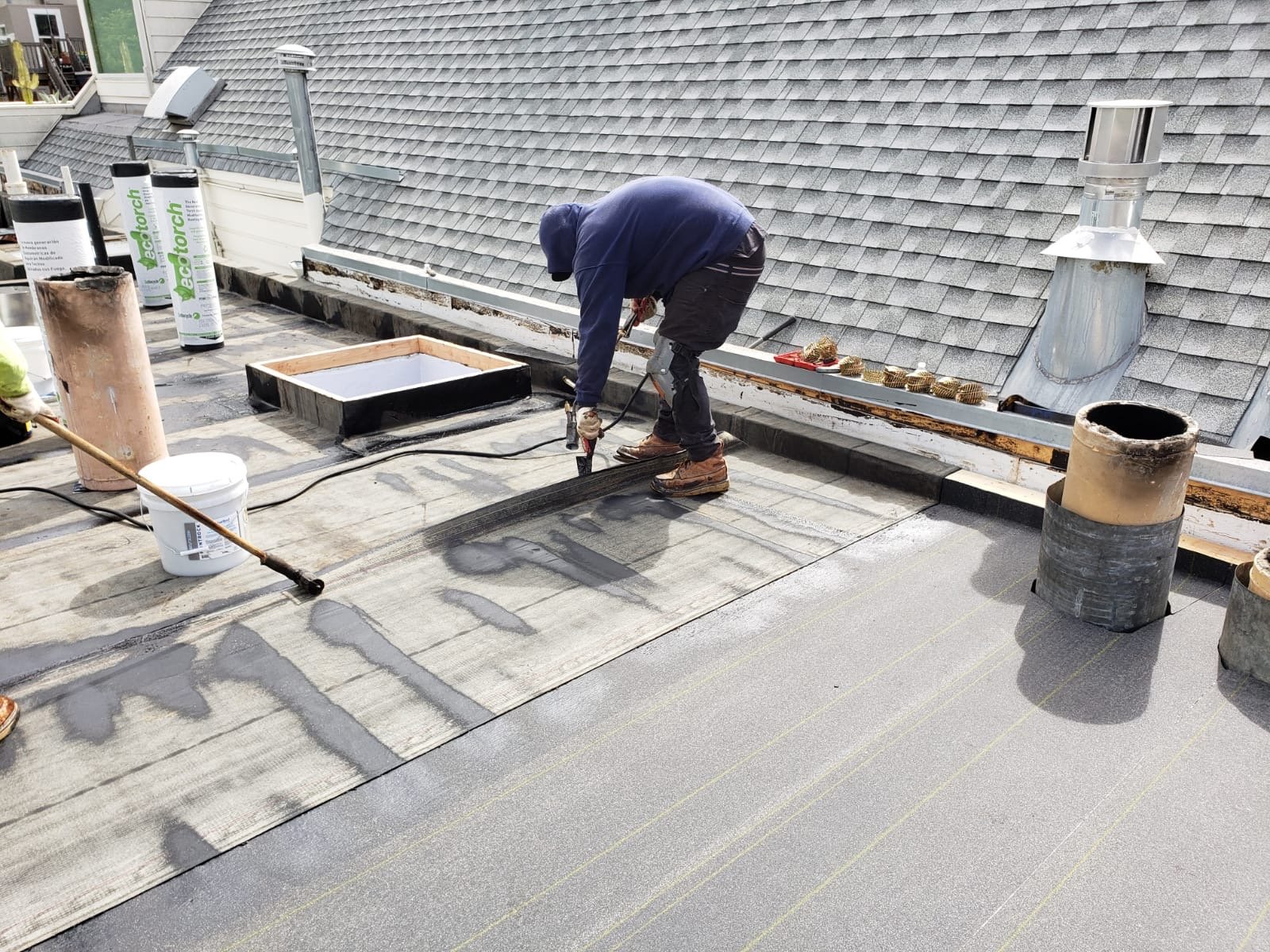
Torch Down Systems
Torch down roofing, sometimes called "torch on" roofing, earns its name from the use of an open-flame propane torch during installation. This method involves rolling out sheets of modified bitumen onto the roof surface, where a skilled roofing professional uses a handheld propane torch to heat the material and bond it securely. Through careful heating, the layers fuse together, creating a watertight seal.
The membrane layers of a torch down roof consist of modified bitumen, an asphalt compound blended with either rubber or plastic. This unique composition allows the roofing to expand and contract without risk of melting or cracking, making it resilient against both extreme heat and cold temperatures commonly experienced throughout the seasons. Torch down roofing comes in various types, including two-layer and three-layer systems.
Wondering if torch down roofing suits your flat roof? Explore the advantages and considerations of this roofing type in the following article. We'll delve into the materials and layers used in crafting a torch down roof.
Materials
Although torch down roofs are sometimes referred to as "rubberoid" roofs, implying a rubber-based material, the reality may differ. All torch down roofing comprises modified bitumen or bitumen with additives. Bitumen, derived from asphalt, serves as a robust material in numerous roofing applications. Manufacturing torch down roofing entails modifying or blending bitumen with a polymer.
One common polymer utilized is Atactic Polypropylene (APP), a form of plastic that renders torch down roofing membranes flexible and responsive to temperature changes. Another polymer, Styrene Butadiene Styrene (SBS) modified bitumen, adds rubber properties to the bitumen, offering flexibility and a lower melting point than APP. SBS-modified bitumen membranes can be installed via torch application, self-adhesion, or cold processing methods.
To provide structural integrity, a mat of fiberglass, polyester, or similar material often serves as the core for torch down roofing membranes. Additionally, manufacturers may embed granules into the membrane's top layer to enhance fire resistance, offer color options, provide UV radiation protection, or introduce other distinctive features.
Types
Torch down roll roofing comes in two primary types: two-layer systems and three-layer systems. While both include base and cap sheets, three-layer systems feature an additional layer—a granule cap sheet—enhancing the roof's longevity and augmenting its fire resistance, energy efficiency, color vibrancy, or other attributes.
Components
Insulation: Essential for flat or low-sloped roofs, insulation helps retain heat within the structure. It can be mechanically attached or fully adhered, depending on the deck type and performance requirements.
Vapor barrier: This underlayment prevents condensation or moisture issues within the roof structure.
Overlay board: Laid atop the vapor barrier, an overlay board supports the torch down the roofing membrane and prevents water ponding.
Base sheet: The initial layer of modified bitumen membrane, secured to the overlay board via direct heat fusing, hot mopping, or adhesive.
Cap sheet: Positioned as the top membrane layer, the cap sheet is heated and fused to the base sheet to form a seal. In a two-layer system, this completes the installation; in a three-layer system, an additional granule cap sheet is applied.
Flashing for penetrations: Modified bitumen membrane and metal flashing are used around roof penetrations like vents or HVAC units to prevent leaks.
For more information about torch down roofing systems and their suitability for your property, contact our expert team. We're here to assist you in making informed roofing decisions tailored to your needs and preferences.
